OPEN LABORATORY LESSON USING ACTIVE LEARNING METHODS
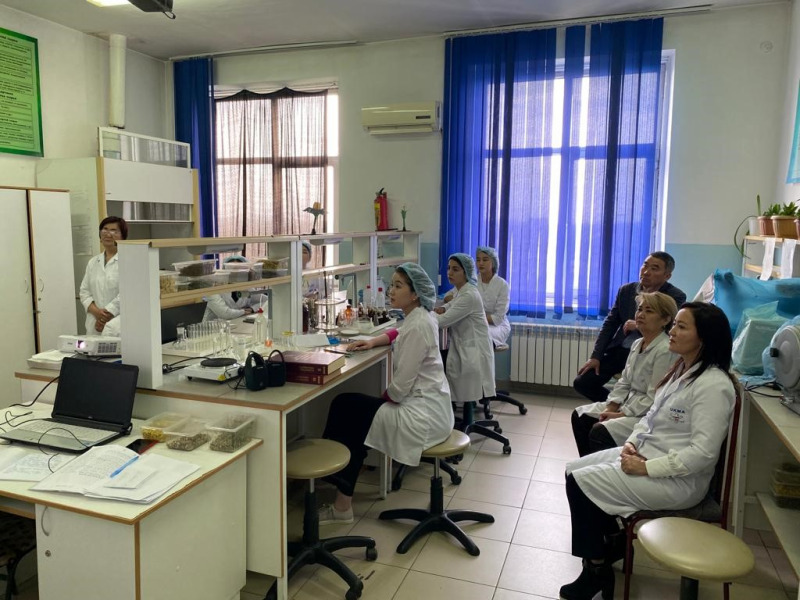
On April 17, 2023, at the Department of Pharmacognosy, from 9.00 to 11.50, an open laboratory lesson was held using active interactive teaching methods TBL on the topic "Analysis of medicinal plant materials containing flavonoids" for students of the 3rd year of the group PKA-01-20 of the educational program 6B10106 "Pharmacy". The lesson was conducted by the senior teacher Ibragimova Z. Y.
During the laboratory session, students acquired the skills necessary to conduct analytical work. Assimilation of the material was formed from interrelated questions that reveal the content of the topic, on which the lesson plan was drawn up.
Students answered questions about the characteristics, classification, physical and chemical properties of flavonoids as biologically active substances, distribution in the plant world, presence in organs and tissues, the dynamics of formation in plants, about the features of drying, storage and preparation of medicinal plant materials (MPs), the use of drugs, the pharmacological activity of drugs containing this group of biologically active substances, as well as side effects.
The student determined the types of medicinal plant materials, and their names were called in three languages: Kazakh, Russian, Latin.
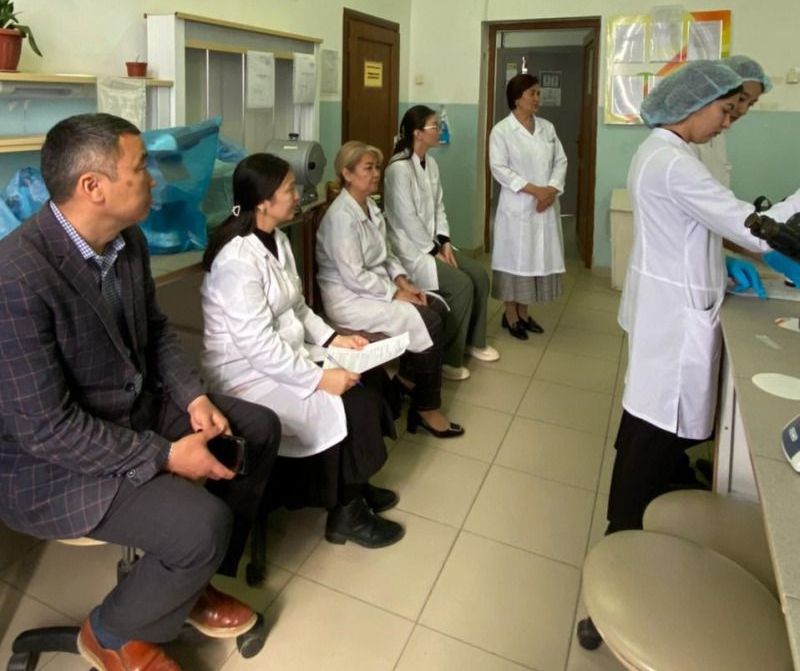
On the topic, a video was shown "Medicinal plant materials containing flavonoids"
An intellectual games, a quiz game "Choose the right herbal medicine" used to consolidate knowledge.
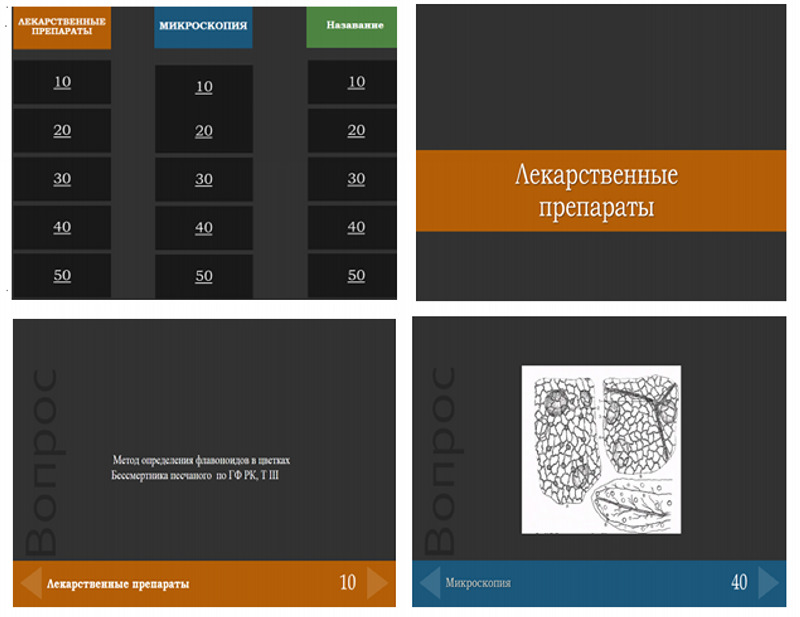
Summarizing the theory of medicinal plant raw materials containing flavonoids, students showed laboratory work in practice.
At the laboratory lesson, the students were divided into two subgroups and solved situational problems. They voiced the name and genus of medicinal plants, medicinal plants according to the model of the herbarium in Kazakh, Russian, Latin, gave a botanical description, also showed the geographical distribution of the medicinal plant, the place of growth.
During the lesson, chemical glassware, installations, reagents, microscopes, chromatographic chambers were used. Microscopic analysis revealed anatomical and diagnostic signs of medicinal plant materials.
The qualitative composition of MPC was determined in two ways: by carrying out the reaction in a test tube and using a chromatographic chamber.
Isolation: 20 ml of 70% ethyl alcohol is added to 1 g of crushed raw materials, refluxed for 40 minutes, filtered. To conduct a qualitative reaction, 2-3 ml of the extract was taken.
Qualitative analysis: All plants in this group showed specific responses to phenolic compounds as they are polyphenols. Features of coloring depend on the location of the OH-Group.
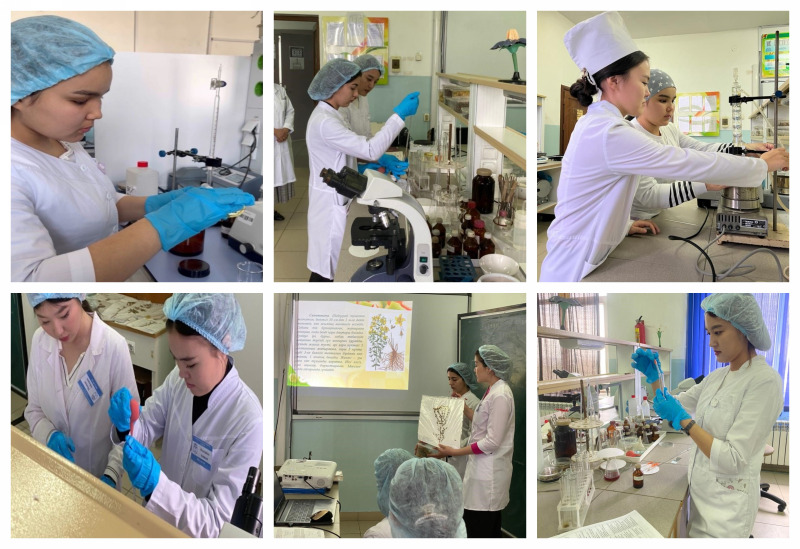
At the end of the laboratory work, the students explained which of the two methods is most effective for determining the qualitative composition of the MPM.
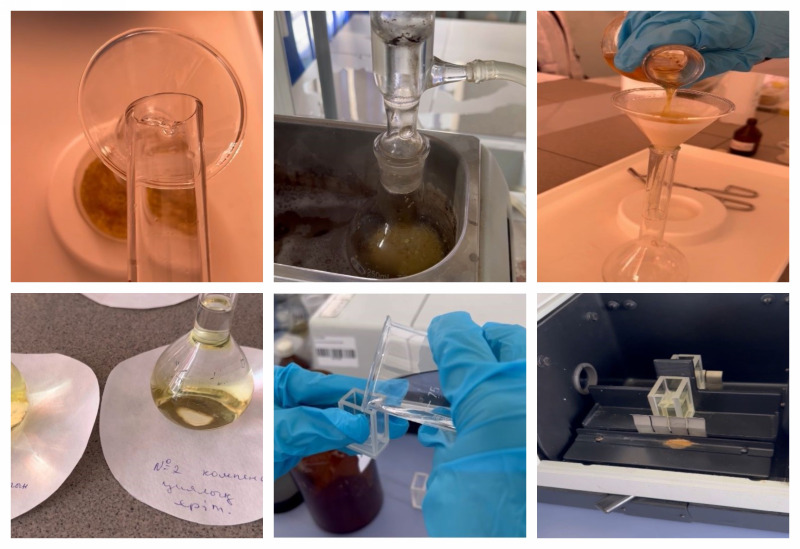
The laboratory part was carried out after school hours using the photoelectrocolorimetry method for the quantitative determination of the content of flavonoids in plant raw materials according to the SP RK, T III edition - 1. The optical density of solutions obtained using photoelectrocolorimetry was measured and flavonoids were determined in a colorimetric solution. The work performed was shown in a video, which in turn contributed to a better understanding of the new topic.
In order to summarize the lesson, test tasks were completed on the Kahoot platform for feedback from students.
Thus, in the laboratory lesson it was possible to touch on all aspects of the topic being studied, and also each student managed to find answers to his questions.
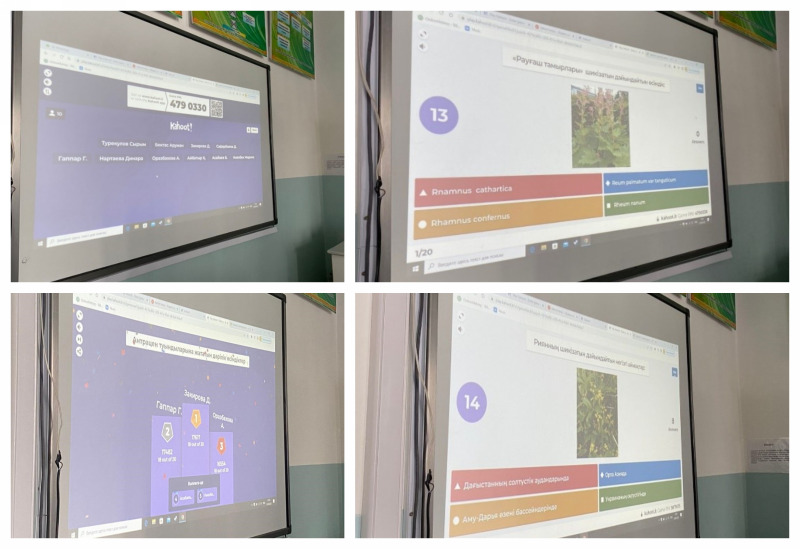
 820 views
820 views
